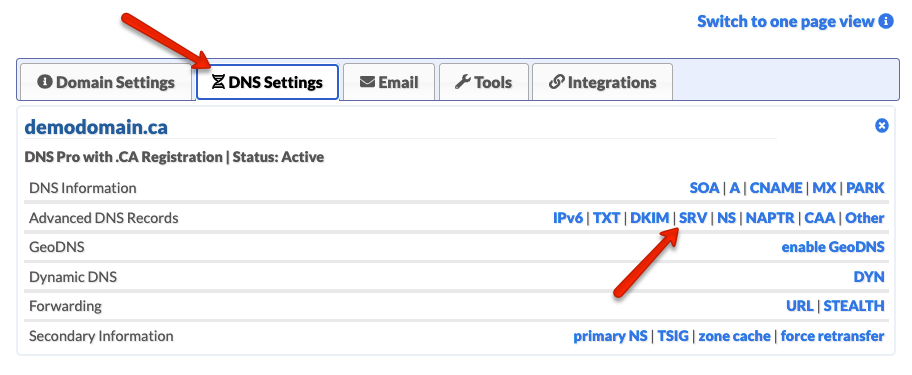SRV Records (also known as Service Records) allow a great deal of flexibility and stability to services making use of them. Like a “general use” MX record, the SRV records relate to a particular service of the domain, like VOIP or SIP, rather than a specific machine the way A or CNAME records do. This allows various applications to inquire whether a domain supports that service and if so connect to it, without knowing in advance the name or location of the machine responsible.
To access your domain’s SRV Records, please do the following:
1. Log into your easyDNS account.
2. Click on DNS.

3. Click on the EDIT icon for SRV RECORDS. Note that you can also click on SRV RECORDS under the DOMAIN ADMINISTRATION page.



4. Enter all SRV record information and click NEXT.

5. Confirm your changes.
SERVICE
This is the service the record is being set up to handle, such as Sip or FTP. This must be the standard designation for the service, so you will want to check the documentation on the service if you are not entirely sure what to enter.
PROTO (PROTOCOL)
This is the protocol the service is running on. Currently, SRV records support the TCP and UDP protocols, which you can select from the drop-down menu in this field. If the same service can be running on either protocol you can create SRV records for the same service pointing to the same or different machines as appropriate.
HOST
This is the name people will use to look for the service you are creating the record for, it can be the domain name itself or a specific host of that domain. If the host is to be the domain name itself, enter “@” in the host field rather than leaving it blank.
PRI (PRIORITY)
Like with an MX record, priority determines in what order servers are queried if there are multiple SRV records for a given service. The lowest number priority is looked to first, so a server with a priority of 5 would be checked before a priority of 10. The higher priority numbers are checked in cases where the first server is unavailable.
WGT (WEIGHT)
In the event of multiple records, weight is a load balancing mechanism that determines the proportion of traffic the given target will handle. If 2 SRV records exist for the same service at the same priority, traffic will be directed to them in proportion to the weight. A server with a weight of 20 will receive twice the traffic as one with 10, and so on. If there is no load balancing going on it is recommended to use a weight of 0.
PORT
Port is the port number the service is run through on the machine providing it. This may or may not be a standard port designated in Assigned Numbers. Check the documentation for the service.
TARGET
This is the hostname of the machine providing the service for the domain. This name must be defined as an A record for the SRV record to function.
